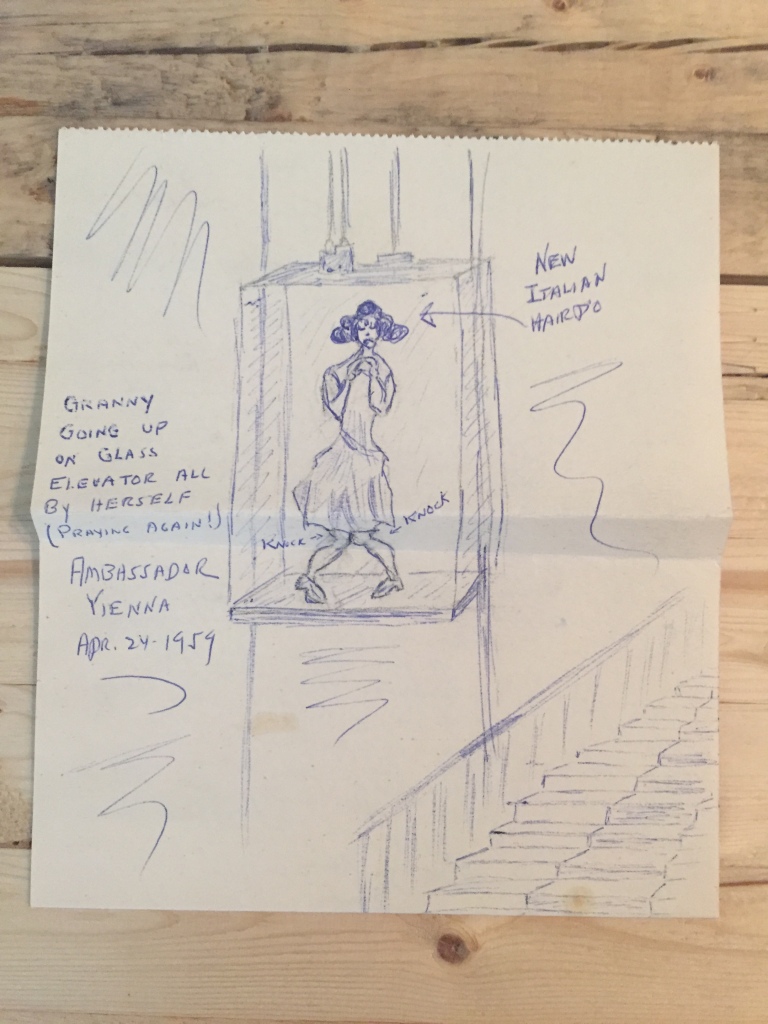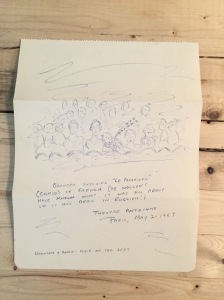
[Unicorns?]
Today I came across this piece, by the Gospel Coalition’s Joe Carter, arguing that there’s no real demand for gay marriage. Using back-of-the-envelope math, Carter figures that, if LGBT Americans were as interested in marriage as straight Americans, we would expect that before Obergefell there would already have been 2.2 million gay marriages in the US. Instead, he says, there were 170,000. Catholic conservative Patrick Deneen caught Carter’s post and tweeted it, saying, “One might conclude that SSM was really a shrewd effort to eliminate Christianity from American life.”
Now, I don’t know what your facebook feed has looked like over the past few years, but mine has been full of gay marriages. In just the past two weeks, I’ve watched three gay couples celebrate their wedding anniversaries; all of them got married in the months after gay marriage became legal in their home states. My timeline is also full of gay friends preparing for their upcoming weddings, gay couples who recently got married, and straight friends posting pictures of themselves at same-sex weddings. I did a quick tally of my out gay friends on facebook, and found that about half are either married or engaged.
The plural of anecdote isn’t data, though, and it’s possible my friends are exceptional. It’s definitely true that they represent a demographic (educated, youngish) that’s more likely than average to get married (And more likely stay married. And more likely to support SSM. Make of that what you will). Still, it’s hard to believe the discrepancy between my experiences and Carter’s statistics could be that profound. Are my friends that rare?
I didn’t think so, so I checked Carter’s analysis. Surprise, surprise—I found some glaring flaws.
First, Carter uses data that ends in 2013, and presents it as if it came from later. The 170,000 number that Carter says represents the number of gay couples married before Obergefell actually comes from data collected between January and December of 2013. That matters—big time—because with marriage equality, dramatic legal changes happened in a very short time period. And that time period happens to be exactly the gap that Carter is ignoring.
Specifically, at the start of 2013, only nine states and the District of Columbia allowed gay marriage, and three of those (Washington, Maine, and Maryland) had had it for less than a month. And all of those states were clustered in the Northeast, with the exceptions of Iowa and Washington (where SSM started in December of 2012). Several more states gained gay marriage during 2013, but all of those were added in the second half of the year and therefore would not have been fully reflected in the data Carter cites.
So when Carter blithely bases his analysis on the assumption that “any lesbian or gay couple who wanted to get married could have either married in their own state or crossed state lines to get a marriage license”… um, well, no.
In fact, at the start of 2013, a gay couple in Austin would have had to travel 930 miles to get married in Des Moines; a couple in San Francisco would have had to go 800 miles to wed in Seattle; one in LA would have had to go at least 1100 miles. That’s not feasible for lots of couples.
Without that assumption, Carter’s argument falls apart: it turns out the number of gay marriages in 2013 wasn’t low because gays didn’t care about marriage; it was low because most gays in the US couldn’t get married then.
Carter misrepresents the timeline of SSM legalization elsewhere, too. “By that year,” Carter writes of 2014, “35 states allowed same sex marriage.” In fact, at the start of 2014, only 16 states performed legal gay marriages, and seven of those—including the largest, California, had only started in the last half of 2013.
These timeline mix-ups—clear cut, factual mistakes that an honest writer (and I assume Carter is honest) will admit and correct—allow Carter to suggest that, at a time when virtually all LGBT Americans could legally wed, only 340,000 (roughly 4%) had chosen to do so.
—-
But even putting aside Carter’s chronology confusion, his suggestion is problematic because it takes an inappropriate point of comparison for LGBT marriage rates. He writes, “Based on those assumptions (all of which I think are more than plausible), we should expect to see 2.2 million same-sex marriages even before the Supreme Court ruling.”
Carter bases that number, 2.2 million, on the fact that nearly half of all American adults (49.8%) were married. Carter estimates that there are 8.5 million LGBT Americans, divides that by about half, and then pairs that 49.8% off.
But while it’s true that half of Americans are married, very few Americans get married in a given year. See the difference? 159 millions Americans were married in 2014, but all of those Americans didn’t wed in 2014. Some of them tied the knot in 2013, some in 2012, and some twenty, thirty, fifty years ago.
Furthermore, marriage isn’t a right that, when given, you can exercise like free speech. You can’t just walk outside and say, “I’m married!” You have to either a) be in a relationship with someone you want to marry (and not everyone is), or b) find someone you want to marry, build a relationship with them, and convince them to marry you. That takes time. And while we all loved watching couples rush down to the courthouse, the reality is that most people want a wedding, and that takes time to plan. I’ve written about my sister-in-law, for example: marriage became a real possibility for her when SSM was legalized in New York in July of 2011—that was the event that led her wife to propose—but she didn’t actually get married until December of 2012.
It’s absurd to suggest that, if gays were really interested in marriage, 2.2 million of them would have wed by 2013.
A more useful number to keep in mind is 6.8: that’s the number of weddings per 1000 Americans in 2012, the last year for which statistics are available. That means that only about 1.36% (.68% x 2) of Americans got married in 2012.
Let’s take a look, then, at Carter’s predicted SSM numbers keeping that number in mind. Let’s say that marriage became truly feasible for the vast majority of gay couples with its legalization in New York in July of 2011—which, again, is a BIG stretch. Over the next two years, if gay couples were as interested in marriage as straight couples, we would expect about 119,000 couples (238,000 individuals) to have married by July 2013. According to Carter’s estimate, 170,000 couples (340,000 individuals) had.
Now, we would expect the number for gays to be higher (maybe much higher) than that of straights due to pent-up demand. As best we can tell, it was higher. And, of course, some gays have been able to marry since 2004, so that skews things a bit. But, again, it’s simply not the case that marriage was feasible for most gays by 2013. Gays (like my sister-in-law) who married before Windsor faced geographical, financial, and legal barriers that straight couples did not, and they wed without any guarantee that their home states or the federal government would recognize their relationships. Given those facts, the number of couples who went ahead and jumped the broom is, in my opinion, pretty impressive.
The percentage of married LGBT Americans will undoubtedly increase over the coming years. How dramatically? I don’t know. Will it ever equal the 49.8% average of all Americans? Again, I don’t know, but that doesn’t really matter. The fact that some gays might not be interested in marriage is no reason to deny the right to all of them.
What is absolutely clear is this: my friends are not unicorns. My sister-in-law is not a mirage. Nor are they elaborate covers for some sinister secular plot to eliminate Christianity from American life. You can rest easy, Deneen. You’re welcome.
It’s also clear that Carter’s analysis is flawed, as I’m sure he’ll admit when he re-considers the facts

 Anthony Esolen’s recent article at Crisis, “
Anthony Esolen’s recent article at Crisis, “


